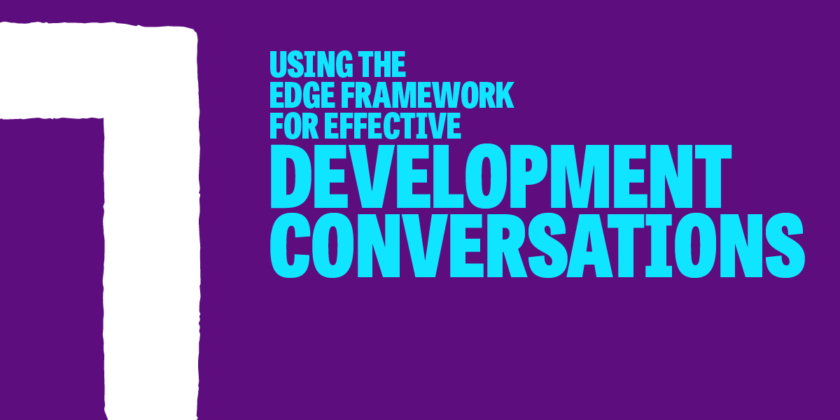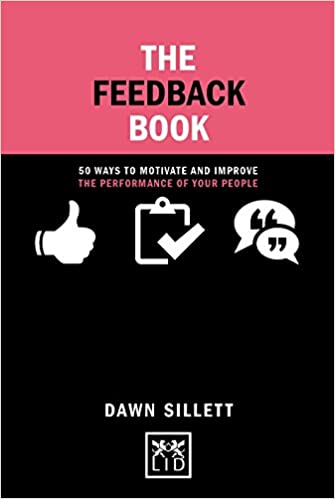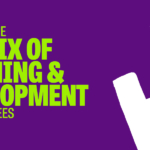Turning difficult conversations into positive feedback sessions
Giving feedback can be hard. We all try to prepare for those sessions when we know we have to talk about a negative situation. We tend to stall, push them back, or find gimmicks to make the discussion easier (remember the sh*t sandwich?), However, it’s important to remember that feedback is a powerful tool that can both boost productivity and improve performance. It just seems that, in a work context, giving feedback is often blown out of proportion and can leave managers stressed and anxious, and employees confused and deflated.
But really, when you think of it, we all give and request feedback on a regular basis, in a variety of settings – when we ask someone how an outfit looks; when we practise a speech in front of a friend, or; when we review a situation with a coworker to process whether or not we took the right course of action.
“Feedback is not only part of our everyday life, it is actually a gift. A gift we are owed as learners,” says Jo Taylor, MD at Let’s Talk Talent (LTT).
Why use the EDGE feedback framework?
There have been a lot of feedback frameworks and techniques developed in order to make this part of a manager’s job a little bit easier. There is GROW, the SBI Feedback model (and its siblings, AID, STAR, BEEF, etc.), the agile retrospective ‘keep doing, stop doing, start doing’ exercise, the DESC model, 360 feedback, and many more.
All of which can facilitate potentially difficult conversations and optimise results. But with so many around, how is a manager or an employee meant to pick the right one for the job?
However, at LTT, we have a clear favourite: the EDGE framework. Developed by Dawn Sillett, this particular one is simple and effective and, more importantly, it puts people at its core. It is also extremely versatile and can be used during any formal or informal feedback session, at work or outside of it.
Here is how you can use it to structure your feedback in a way that will motivate your people and get them striving for more by leaving them with a clear idea of how to improve their performance.
Why is effective feedback so important?
Today’s talent pool expects (and craves) regular developmental feedback in order to learn new skills, increase their performance, or simply progress their career. In fact, research shows that direct reports wish they received more frequent feedback from their managers. And this is no surprise: feedback is one of the most important tools available to managers to help their team members grow and progress in their current role, as well as work towards the next one. But it’s not just for performance management.
Employees need to feel challenged and to stretch their skills, but they need to do so in an environment where they are both given the freedom to make mistakes, and the support needed to learn from them. “We learn when things go right, but we also learn when things go wrong. Fail fast and fail often; that’s my motto,” adds Jo.
Managers (as well as most people) have a tendency to avoid giving negative feedback as they fear it will lead to conflict or damage the relationship they have worked hard to build with their colleagues. Here, Jo asks: “Managers want to be liked, of course, but isn’t it best to be respected?”
When delivered effectively in an authentic and fair way, feedback actually increases trust and respect, and builds stronger relationships. Managers have a 360 view of their people’s strengths and challenges and can contribute to their career progression, improve their performance, and increase their job satisfaction. Communicating these insights is an opportunity that shouldn’t be missed.
So how can HR departments help implement a culture of continuous developmental feedback within their organisation? By providing managers with the kinds of tools that will help them deliver this feedback as part of a safe, constructive, open, and two-way conversation.
The EDGE feedback framework
We may have a slight bias here as: we particularly value this feedback framework as it fits our values so well. At Let’s Talk Talent, we respect people who tell us the truth, no matter how hard it is. The EDGE framework gives anyone the structure needed to do just that.
It isn’t linked to a particular process and can be used as part of a performance management discussion, a career conversation, or your casual weekly check-in with staff members. It can also be applied to a more formal discussion to review a specific situation and provide opportunities for development and, equally, to celebrate successes.
Here’s how it works.
Explain
Go through the details and the specifics of the situation with your staff member. Summarise what happened, good or bad, and stick to the facts. If you are discussing continuous behaviour, give a few examples to illustrate.
Describe
Talk about the impact this situation or behaviour had on you, the team, or the organisation. Give details of what they could be doing better (and how), and what they are doing well.
Give
Give the other person the mic. Don’t forget that feedback is about having a conversation. It should be an open, two-way dialogue. Use this moment to pause and actively listen to what the other person has to say. They may have important information to add that could modify your understanding of the situation. You should also ask questions to check that the other person has a good understanding of your intended message, and to find out what action they intend to take moving forward.
End positively
Reaffirm next steps. What are you going to do as a follow-up? Will you be picking up next week? Tomorrow? In 3 months? Create a plan and that will keep the other person (and you) accountable. Remember that some people need a bit of time to process information; let them know you are available if they need to discuss this again.
Applying the EDGE feedback framework
The beauty of the EDGE framework is that it can be used in just about any situation – at home, at work, with your friends, or with staff members. Feedback gives us an opportunity to become better people, and this technique gives managers a surefire way to deliver it in a transparent and effective way that will increase motivation levels and generate trust, rather than leave staff deflated.
And remember, giving feedback is a skill that can be improved with practice. Like a muscle, you can build it up over time, so don’t shy away from opportunities to help staff members become even more amazing!
If you’d like a bit of additional support, or if you feel you could become more confident giving feedback, Let’s Talk Talent can help. Book a meeting to discuss our Coaching on Demand service. Or browse our free resources on management development, or enquire about our workshop to help managers have courageous conversations.
Otherwise, have a look at Dawn Sillett’s book, The Feedback Book, for more details on the EDGE feedback framework.
The Feedback Book: 50 Ways to Motivate and Improve the Performance of Your People
Dawn Sillett
Is a super simple workbook style that gives anyone needing to give feedback practical tips and tricks that get them started. It is written in a non HR way for non HR people which I like and can have an impact on someone personally and professionally. I have used a lot in my coaching and mentoring with managers as well as used some of the models in our workshops e.g Courageous conversations.
Related resources
- Leadership Books we recommend for Leaders and more effective feedback [Blog]
- Top 3 ways for managers to give their staff great feedback [Blog]
- Giving Effective Feedback for managers [Paid Workshop]
- Live 360 Degree Feedback Reviews [Paid Workshop]
- Encouraging 2-way Manager/Employee feedback [Podcast]
- The top 10 performance management review mistakes you’re probably making [Blog]





